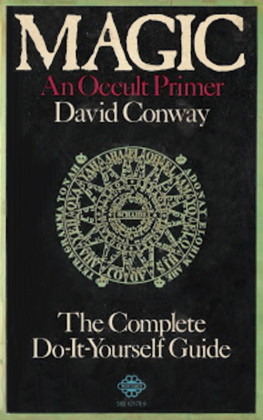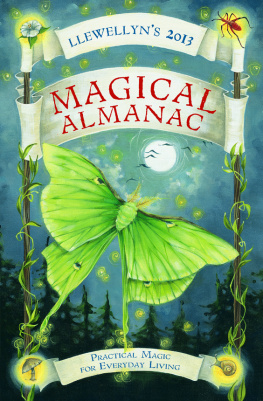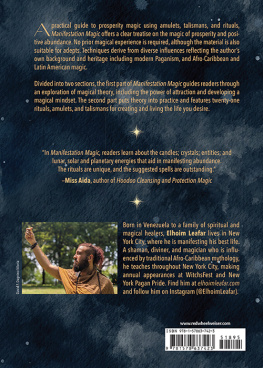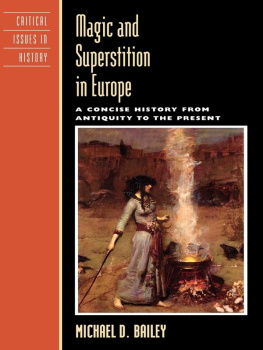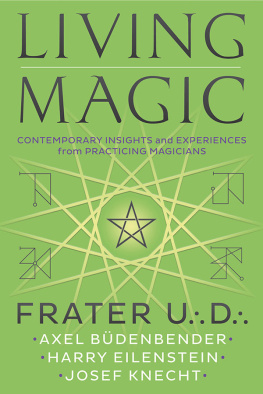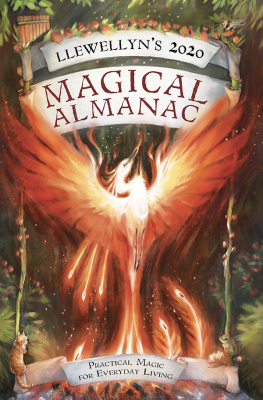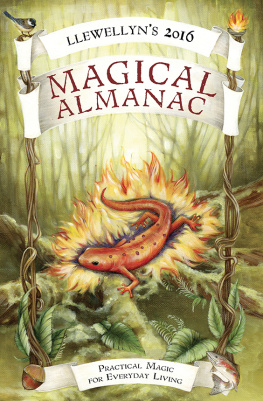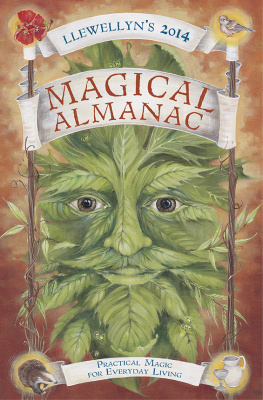
First Published 1972
Hardcover published in 2016 by Aeon Books Ltd.
118 Finchley Road
LONDON NW3 5HT
Softcover published in 2016 by The Witches' Almanac LTD.
P.O. Box 1292
Newport, RI 02840-9998
Text Copyright 2016 David Conway
Illustrations, Layout and Design Copyright 2016 The Witches' Almanac, LTD.
Address all inquiries and information to
THE WITCHES' ALAMANAC, LTD.
P.O. Box 1292
Newport, RI 02840-9998
All rights reserved. No part of this publication may be reproduced, distributed, or transmitted in any form or by any means, including photocopying, recording, or other electronic or mechanical methods, without the prior written permission of the publisher, except in the case of brief quotations embodied in critical reviews and certain other noncommercial uses permitted by copyright law.
Hardcover:
13-ISBN: 978-1-904658-72-6
Softcover:
13-ISBN: 978-1-881098-37-9
www.redwheelweiser.com
www.redwheelweiser.com/newsletter
Pronaque cum spectent animalia cetera terram
Os homini sublime dedit, coelumque tueri
Jussit, et erectos ad sidere tollere voltus
Ovid, Metamorphoses I
All other creatures look down towards the earth,
but man was given a face so that he might turn
his eyes towards the stars and gaze upon the sky.
CONTENTS
Antidotes
Celestial Script
ILLUSTRATIONS
The Tree of Life
The Triangle of Art
The Trident of Paracelsus
The Incense Burner
The Altar
A Talisman
Kabbalistic Charms
Egyptian Charms
Antidotes
An Egyptian Figure
Mandrake
White Briony
Venusian Inscription
Cover Illustration: Chnoubis is a the solar lion headed serpent of Egyptian Gnostics often found on gems and amulets for protection against disease and poisoning. Chnoubis is an aspect of the Gnostic Demiurge, Yaldabaoth associated with Abraxas. It is the perfect combination of the solar lion leading to enlightenment and serpent connecting back to the earth energies.

FOREWORD BY COLIN WILSON
T his strikes me as one of the best books on magic that has been written in the twentieth century, and one of the best introductions to magic (an altogether rarer phenomenon), written in any century. I have only one minor criticism. The author is a genuine magician; consequently, he fails to grasp the extent to which the rest of us find the whole idea of magic frankly absurd. Let me see if I can make the proposition sound any less illogical.
In August 1888, a young man named Charles Johnston was sitting in the room of Helena Petrovna Blavatsky. The founder of Theosophy. Madame Blavatsky was playing patience; her friend Colonel Olcott, on a visit to her, was writing a letter at a side table; Johnston was sitting nearby, carrying on a desultory conversation with both. Madame Blavatsky became impatient as the cards refused to come out; she frowned and drummed her fingers on the table top. Then, quite unconsciously, she raised her hand well above the table, continuing to drum with her fingers. The tapping sounds on the table continued. Realizing that Johnston was watching her with interest, she turned towards him and began to tap on the back of his handwithout rising from her seat. He was five or six feet away from her. Now amused by her game, she transferred the taps to the top of his head. Johnston writes: I could both feel and hear them. It was something like taking sparks from the prime conductor of an electric machine; or, better still perhaps, it was like spurting quicksilver...
Johnston goes on to say that this was a quite undoubted miracle. It was, of course, nothing of the sort. It was a perfectly ordinary phenomenon which was observed hundredsprobably thousandsof times by psychic researchers. It is known as a poltergeist effect. Madame Blavatsky was particularly good at it; when she first met her disciple Sinnet, he told her that he had tried spiritualism, but could not even get the spirits to rap on a table. Raps are the easy to get said Madame Blavatsky, and made raps sound from all over the room. A vagabond named William Drury had made the same discovery 200 years earlier; he was arrested at the small town Ludgershall, in Wiltshire, in 1661; his drum was confiscated and he was sent to jail. Immediately afterwards, the house of the magistrate who had sentenced him was disturbed by loud drumming noises, which went on every night, together with other strange phenomena. The caseknown as the phantom drummer of Tedworthis attested by dozens of witnesses. Drury admitted to a visitor that it was he who was somehow causing the disturbances and when he was transported out of the country, they ceased.
Perhaps the most amazing and convincing case is one that has been published since Mr. Conway first wrote this book. In the early 1970s, the Toronto Society for Psychical Research, under the direction of Dr. George Owen and his wife Iris, decided to try to create a ghost. A group of researchers invented the life story of a seventeenth century cavalier named Philip who had a tragic love affair with a gypsy girl and committed suicide. They then sat around and tried to persuade the imaginary ghost to rap on a table. For months, nothing happened although they tried hard. Then, one day when they had stopped trying, loud wraps began to sound from the table. The spirit identified itself as Philip and told his life story in detail; it also made the table march around the room. Philip eventually became such a professional performer that he even made the table levitate in front of a television audience.
In short, there can be no reasonable room for doubt that poltergeist effects originate in the human subconscious mindmore often than not in the minds of disturbed adolescents. Yet we do not have the slightest idea of how the mind can cause an object to fly through the air or make rapping noises all over the room. What energies are involved? How do they work? At the moment, no one has even managed to offer a convincing explanation.
Now I would submit that this is what is usually meant by magic. It is true that the legendary great magiciansfrom Merlin to Gandalfcould do far more spectacular things; Merlin is supposed to have transported the great trilithons of Stonehenge from Ireland by magic. (He didn'tthey were there 2000 years before King Arthur's time.) But if you read any book about the history of men who were supposed to be able to perform magic, from Apollonius of Tyana to Aleister Crowley, you will discover that their feats were far less spectacular. Crowley once demonstrated his powers to an acquaintance in New York; he fell into step behind a respectable looking gentleman, imitating his walk exactly. Suddenly, Crowley allowed himself to crumple at the knees; the man in front of him also fell on the pavement; he got up looking puzzled and frightened, wondering what had happened.
And now, I think, my own basic theory of magic should be emerging. Magical powers originate in the unconscious mind. And the reason that we are naturally sceptical about their existence is that what you call you and I call me are our conscious egos. Disturbed adolescents can cause poltergeist effects because their unconscious minds are far more highly charged than the average person's by tensions due to physical changes. (For some odd reason, menstruating women can sometimes produce the same effectsa fact that is recognized by most primitive tribes.) In most of us, the unconscious has adjusted itself to the routine of everyday life, and sees no good reason to make unusual efforts. So it yawns and relaxes. A man like Crowley deliberately kept his unconscious supercharged by practicing strange magical rituals and by behaving in a way that would strike most of us as deplorable. (For example, he filed his teeth so as to be able to draw blood from his girlfriends, who were usually masochists.)
Next page
